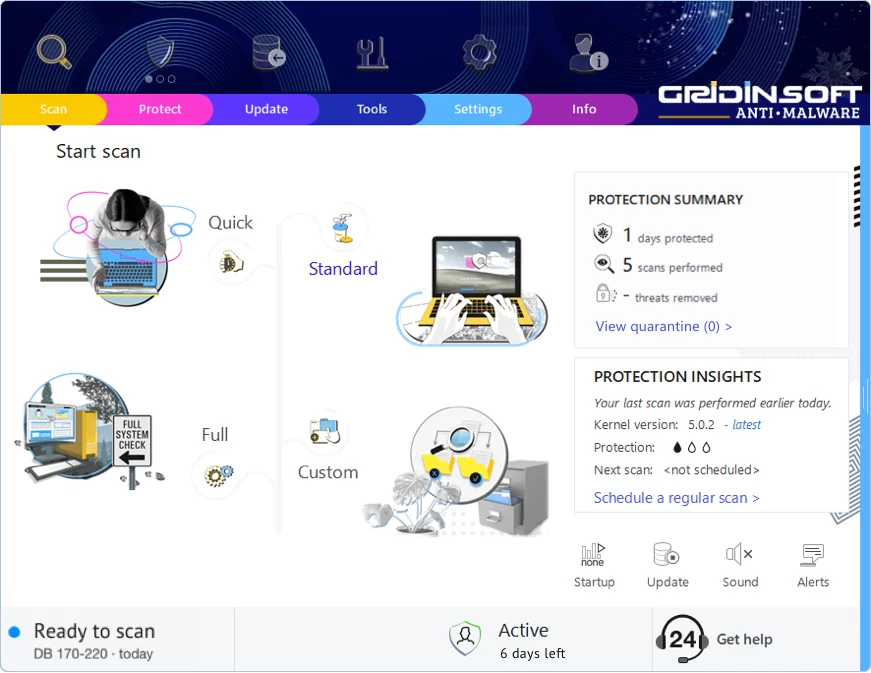Floxif (Win32/Floxif)
Floxif encompasses a category of trojan viruses that specifically target Windows executable and DLL files. Following infection, Floxif enables the compromised files to conduct surveillance on the device and act as a gateway for additional malware. Notably, in 2017, Floxif gained infamy for being bundled with authentic versions of the CCleaner utility, as hackers introduced the malware into CCleaner's development environment.
Possible symptoms
- Unusual system behavior, such as slow performance or crashes
- Unexpected pop-ups or advertisements
- Changes in browser settings without user intervention
- Increased network traffic, especially outbound
- Unauthorized access to sensitive files or data
- Disabling of antivirus and firewall protection
- Suspicious activity in system logs or monitoring tools
Sources of the infection
- Compromised software installers or updates, especially from untrusted sources
- Exploitation of software vulnerabilities in the operating system or applications
- Malicious email attachments or links leading to drive-by downloads
- Compromised websites hosting exploit kits
- Use of social engineering techniques to trick users into executing malicious code
- Infected removable media, such as USB drives
- Network-based attacks targeting vulnerabilities in services or protocols
- Compromised supply chain, as observed in the CCleaner incident in 2017
Overview
Floxif, also known as Trojan.Floxif, Win32/Floxif, or Trojan.Floxif.AppFIsh, represents a category of trojan viruses specifically designed to manipulate Windows executable and DLL files. Upon infection, Floxif modifies these files, allowing unauthorized surveillance of the device and creating a gateway for additional malware, such as ransomware or other malicious software.
In 2017, Floxif gained notoriety for being bundled with legitimate versions of the CCleaner utility, where hackers introduced the malware into CCleaner's development environment.
The damage potential of Floxif is extensive, encompassing the theft of credentials, keylogging, device takeover, pilfering of crypto wallet funds, camera hijacking, data theft, opening backdoors for other malware, disabling antivirus and firewall software, and displaying fraudulent ads.
The symptoms of a Floxif infection include unusual system behavior, unexpected pop-ups or advertisements, changes in browser settings without user intervention, increased outbound network traffic, unauthorized access to sensitive files, disabling of antivirus and firewall protection, and suspicious activity in system logs or monitoring tools.
Floxif primarily targets Windows platforms, and its variants include Win32/Floxif.H, Win32.Floxif.A, Win32.Floxif.B, Win32.Floxif.C, Virus.Win32.FLOXIF.D, Win32/Floxif.E, and others.
The sources of Floxif infections range from compromised software installers and updates, exploitation of software vulnerabilities, malicious email attachments or links leading to drive-by downloads, compromised websites hosting exploit kits, social engineering techniques, infected removable media, network-based attacks, to compromised supply chains.
If you suspect a Floxif infection, immediate action is crucial. Isolate the infected system, perform a thorough malware scan using Gridinsoft Anti-Malware, remove identified instances of Floxif, change passwords to prevent credential theft, and update and patch affected software and the operating system.
Preventing Floxif infections involves keeping the operating system and software up to date with security patches, using Gridinsoft Anti-Malware with real-time protection, avoiding downloads from untrusted sources, backing up important data regularly, and exercising caution when clicking on links or downloading email attachments, especially from unknown sources.
🤔 What to do?
If you suspect that your system is infected with Floxif, take immediate action:
- Isolate the infected system from the network to prevent further spread.
- Perform a thorough malware scan using Gridinsoft Anti-Malware.
- Remove all identified instances of Floxif from the system.
- Change passwords for critical accounts to prevent credential theft.
- Update and patch the affected software and operating system.
🛡️ Prevention
To prevent Floxif infections, follow these security measures:
- Keep your operating system and software up to date with the latest security patches.
- Use Gridinsoft Anti-Malware with real-time protection.
- Avoid downloading software from untrusted sources and use official websites or app stores.
- Regularly back up important data to mitigate data loss in case of an infection.
- Exercise caution when clicking on links or downloading attachments in emails, especially from unknown sources.
Gridinsoft Anti-Malware
Stay Malware-Free: Keep Your PC Protected with Gridinsoft Anti-Malware
Gridinsoft Anti-Malware offers just that—peace of mind with a robust, user-friendly solution that’s constantly updated to combat the latest threats. Designed by cybersecurity experts, it provides real-time protection and effortless malware removal. It’s not just about detecting threats; it's about enhancing your digital life with uninterrupted security. Give it a try and experience what it feels like to browse worry-free!

